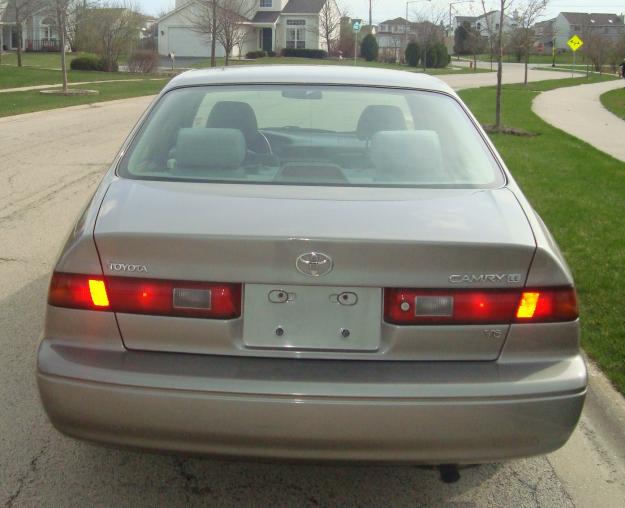QOTD: Four On Six? (Or Boost?)
Once upon a time, there was the Accord. It had sixty-eight horsepower from 1.6 liters of four-cylinder power. And the consumer saw that it was good, and the Additional Dealer Profit stickers spread far and wide across the land. The Eye Of Toyota, concealed within the fortress of Toyota City, saw the Accord and commanded the Camry to be built. It was bigger and more powerful, but it was also powered by four cylinders.
The General Motors X-Body and A-Body, to say nothing of the Ford Tempo and Mercury Topaz, could be had with a V-6, but it mattered not, for not a single Accord buyer in history ever decided upon a Cutlass Ciera as an alternative. But then, one day, Toyota raised the stakes.
And thus the pattern of the marketplace was fixed. In the world of mid-sized sedans, you must offer a four and a six. The six is there to anchor the top of your lineup, to provide a near-luxury experience for buyers who are downgrading from the Europeans, to benefit from the pre-existing synergies with the Lexus or Acura variant of your mid-sizer which has to have a six. The four is there for customers to actually purchase in measurable volume. Over the past two decades, the 80/20 rule has held generally true, with the four gaining a little more ground, perhaps to 90/10, as fuel prices increase and real-world purchasing power drops.
All was well until the Koreans decided to throw salt in the game with the turbo-four Optima and Sonata. General Motors promptly followed them over the cliff with the Malibu Turbo. Ford decided to provide two turbo engines for the Fusion, one of them the same displacement, more or less, as that original 1977 Accord but making two and a half times the power.
This is the most choice we’ve had in the midsizer market since… well, since ever, really. It’s a shame nobody’s offering a wacky-weed eight-cylinder anymore (pour one out for the Taurus SHO, the Impala SS, and the Passat W8) but right now you can get anything from a force-fed 1.6L to a silky-smooth 3.5L V-6. What would you pick? What’s the best mix of fuel economy and power? Will the turbo four kill the V-6, and if so, why don’t the Japanese know this?
More by Zombie McQuestionbot
Latest Car Reviews
Read moreLatest Product Reviews
Read moreRecent Comments
- 28-Cars-Later 2018 Toyota Auris: Pads front and back, K&N air filter and four tires @ 30K, US made Goodyears already seem inferior to JDM spec tires it came with. 36K on the clock.2004 Volvo C70: Somewhere between $6,5 to $8 in it all told, car was $3500 but with a wrecked fender, damaged hood, cracked glass headlight, and broken power window motor. Headlight was $80 from a yard, we bought a $100 door literally for the power window assembly, bodywork with fender was roughly a grand, brakes/pads, timing belt/coolant and pre-inspection was a grand. Roof later broke, parts/labor after two repair trips was probably about $1200-1500 my cost. Four 16in Cooper tires $62 apiece in 2022 from Wal Mart of all places, battery in 2021 $200, 6qts tranny fluid @ 20 is $120, maybe $200 in labor last year for tranny fluid change, oil change, and tire install. Car otherwise perfect, 43K on the clock found at 38.5K.1993 Volvo 244: Battery $65, four 15in Cooper tires @ $55 apiece, 4 alum 940 wheels @ roughly $45 apiece with shipping. Fixes for random leaks in power steering and fuel lines, don't remember. Needs rear door and further body work, rear door from yard in Gettysburg was $250 in 2022 (runs and drives fine, looks OK, I'm just a perfectionist). TMU, driven maybe 500 miles since re-acquisition in 2021.
- 1995 SC I never hated these. Typical GM though. They put the wrong engine in it to start with, fixed it, and then killed it. I say that as a big fan of the aluminum 5.3, but for how they were marketing this it should have gotten the Corvette Motor at the start. Would be a nice cruiser though even with the little motor. The 5.3 without the convertible in a package meant to be used as a truck would have been great in my mind, but I suspect they'd have sold about 7 of them.
- Rochester I'd rather have a slow-as-mud Plymouth Prowler than this thing. At least the Prowler looked cool.
- Kcflyer Don't understand the appeal of this engine combo at all.
- Dave M. This and the HHR were GM's "retro" failures. Not sure what they were smoking....


































Comments
Join the conversation
90% of V6 Accords and Camrys are never used to their potential. I made the decision on a four cylinder Accord. Going from a green light, I'm five car lengths ahead of every other car on the road. Every. Single. Time. I prefer economy in my beigemobile, saving the money for a big engine in my 2nd 'fun' car.
Father in law bought a Camry V6 XLE new in 97, never used it for anything useful that a 4 couldn't do, he just bought it because it is "top of the line" and it is "almost a Lexus" on paper. Fast forward to 2014, the car is much more expensive to maintain due to the V6's extra work on spark plug, belts, and harder to replace leaky gasket, and most importantly HORRIBLE FUEL ECONOMY. The same happen to my dad who bought a 2001 Ford Taurus Vulcan in 2002 for $11k I'll never buy a V6 ever in my life if 4 is available on the same car. I'd even pay more to get a 4 cylinder instead of a 6.